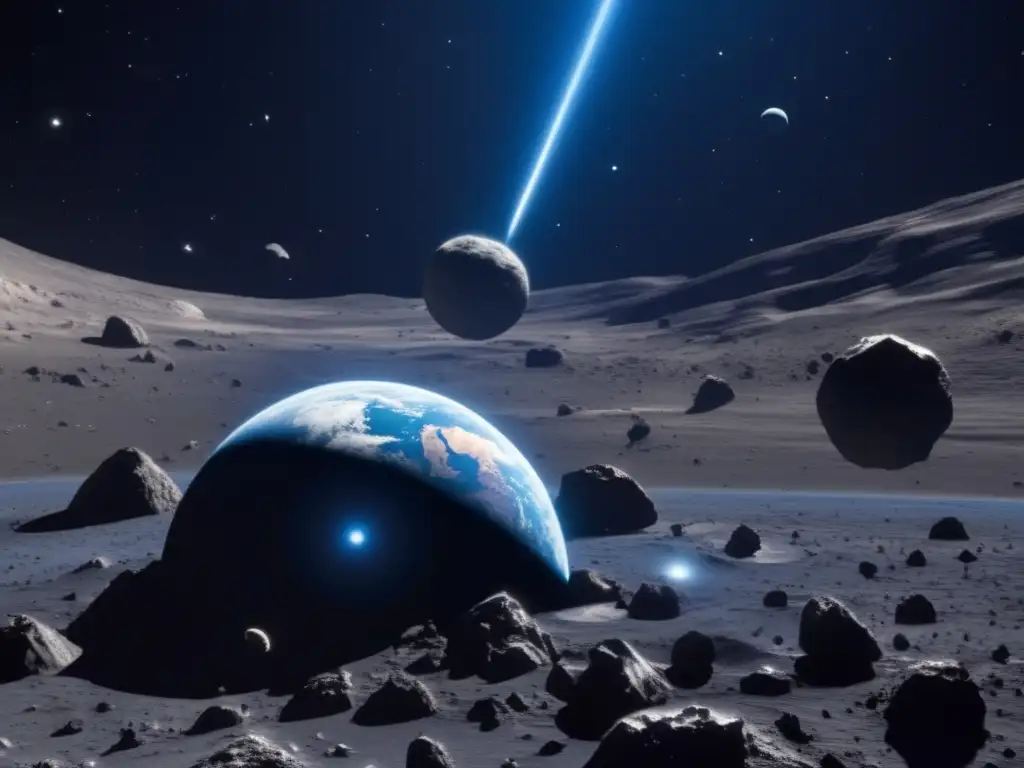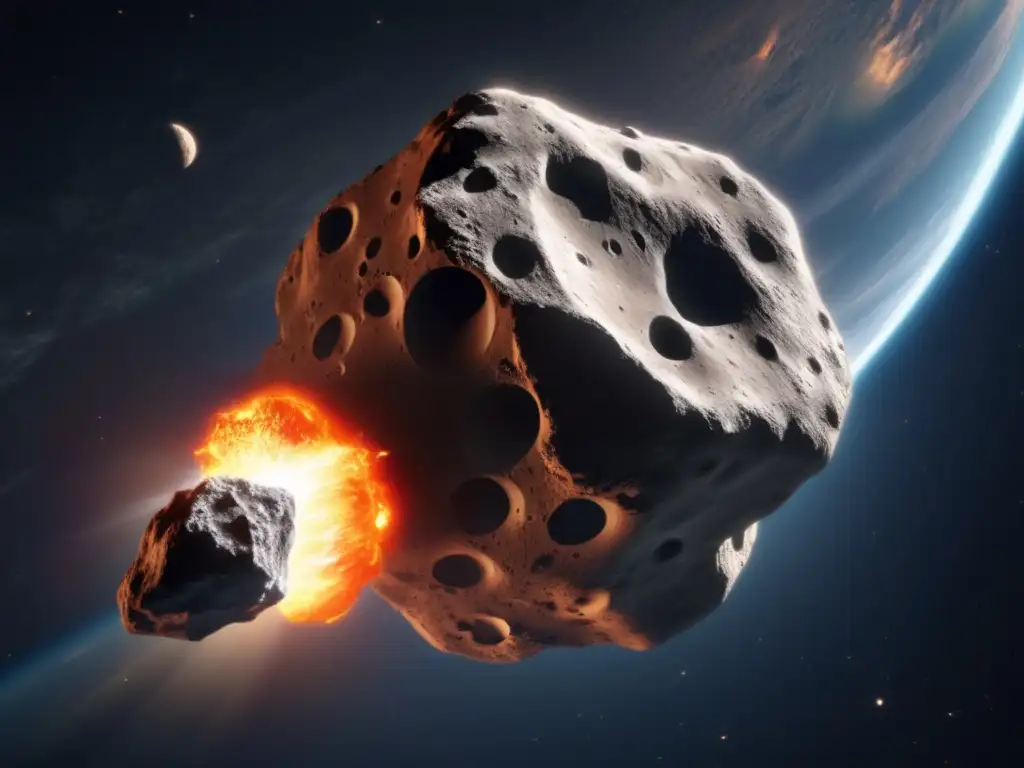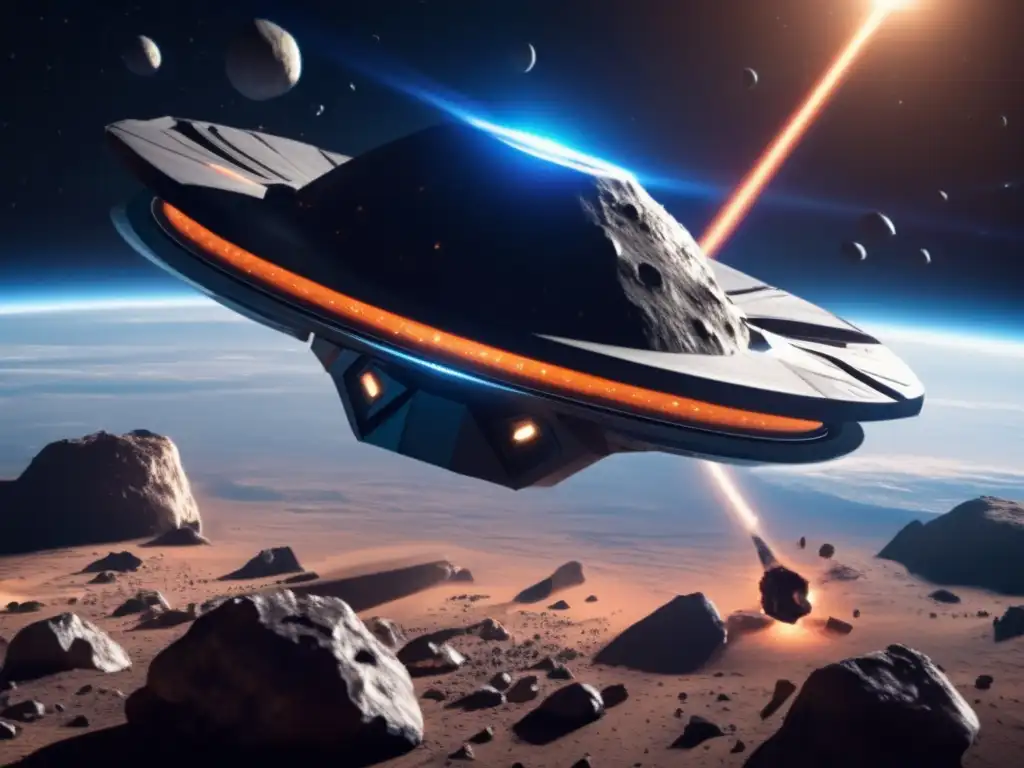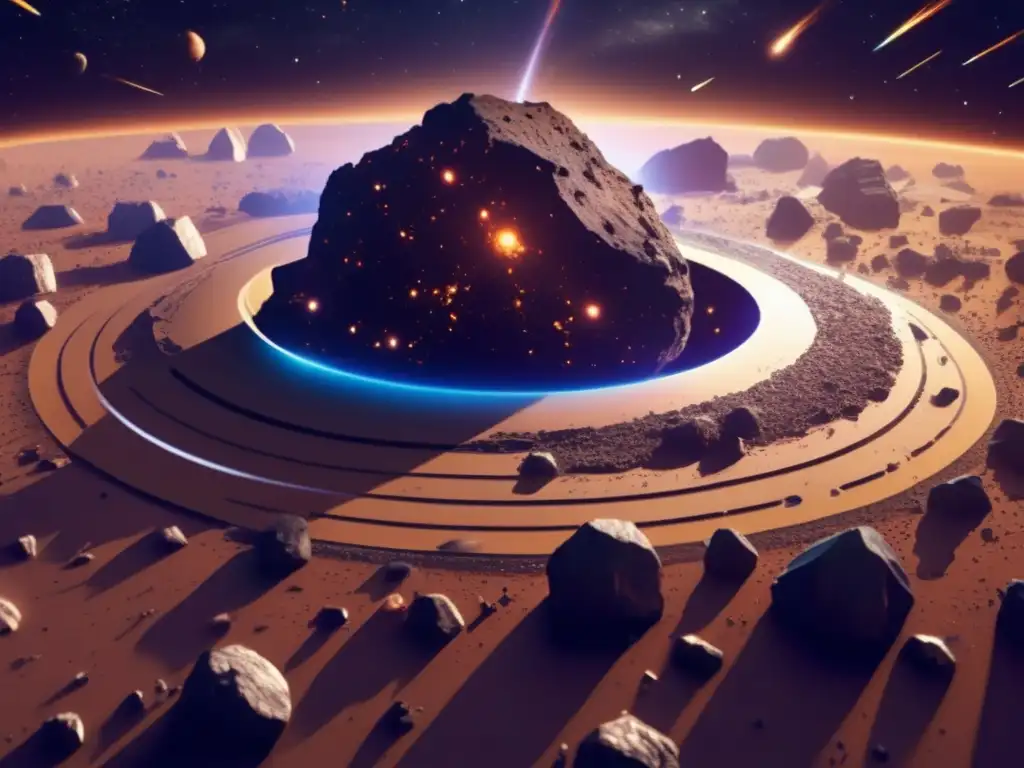Guarding The Galaxy: How We Shield Earth From Asteroids

Introduction
The topic of planetary defense has gained increasing attention as scientists and researchers explore ways to protect Earth from potentially hazardous asteroids. The risk of a catastrophic impact is not rare, and it is crucial to remain prepared and vigilant. In this article, we will dive into the various methods used to shield our planet from asteroids, including detection, deflection, and disruption techniques.
Detection

Early Warning Systems
One of the most critical factors in defending Earth from asteroid impacts is early detection of potential threats. Astronomers use a range of telescopes and imaging technologies to search for small and large objects in our solar system that could pose a danger to Earth. The Near-Earth Object (NEO) program at NASA's Jet Propulsion Laboratory leads the search for asteroids and comets that could come close to our planet. Collaborations with other agencies worldwide have also been formed to broaden the search capabilities.
Tracking Asteroid Trajectories
Once an asteroid has been identified as a potential hazard, tracking its trajectory and predicting its possible impact location becomes essential. Observations gathered from different observatories worldwide are combined in databases and monitoring systems to provide real-time information on the object's position and movement. This allows scientists to refine their calculations and make more accurate predictions about the potential impact date and location, giving valuable time to prepare and deploy defensive measures.
Space-based Detection
Several space missions have been launched in recent years to supplement ground-based observations with targeted surveys of specific regions of space. For example, the NEOWISE (Near-Earth Object Wide-field Infrared Survey Explorer) mission, launched in 2009, is a space-based telescope that detects and tracks asteroids and comets in our solar system. The mission has contributed significantly to the discovery of previously unknown objects and improved tracking capabilities.
Deflection

Kinetic Impactors
One of the most promising techniques for deflecting an asteroid's trajectory away from Earth is through a kinetic impactor. This involves launching a spacecraft into the path of the asteroid, colliding with it at high speed, and altering its course. NASA's DART (Double Asteroid Redirection Test) mission, set to launch in 2021, will test this method on a small asteroid called Didymos. If successful, it could be used on larger asteroids in the future.
Gravity Tractors
Another potential deflection technique is using the gravitational pull of a spacecraft to slowly change the asteroid's trajectory over time. The spacecraft hovers near the object, gradually pulling it off course with its gravitational force. This method requires a long lead time before impact, making early detection even more crucial. NASA's NEAR (Near-Earth Asteroid Rendezvous) mission in 2000 used this technique on the asteroid Eros to gather data on the object's structure and composition.
Nuclear Detonation
While a final resort, nuclear detonation is a possible deflection method that could be used for very large or fast-moving asteroids. A nuclear explosion near an asteroid could vaporize part of its surface, creating a force that pushes the asteroid off course. However, significant ethical and political considerations would have to be taken into account before deploying such a method.
Disruption

Fragmentation
If an asteroid cannot be deflected or is too large to be destroyed, breaking it up into smaller pieces that burn up upon entering Earth's atmosphere becomes a viable option. Fragmentation can be achieved through various methods, such as launching explosives or impacting a spacecraft into the object at high speed. NASA's OSIRIS-REx mission, launched in 2016, aims to test this technique by collecting a sample from the asteroid Bennu and returning it to Earth.
Gravity Disruption
Another disruption method involves using a spacecraft's gravitational pull to influence the asteroid's rotation and potentially break it apart. By hovering near the object and exerting force on specific points, the spacecraft could destabilize the asteroid and cause it to fragment naturally over time. This technique requires detailed knowledge of the asteroid's structure and composition to ensure maximum effect.
Laser Ablation
A relatively new disruption method is laser ablation, which involves using a high-powered laser to vaporize part of the asteroid's surface. This creates jets of gas that provide a gentle push, altering the object's trajectory over time. While not yet tested in space, laboratory experiments have shown promising results, and researchers continue to explore the potential of this technology.
Frequently Asked Questions

-
What are the chances of an asteroid impact occurring?
The likelihood of a catastrophic impact is relatively low, but still possible. Scientists estimate that an asteroid capable of causing a global catastrophe strikes Earth every few million years.
-
Can we currently deflect an asteroid?
Several techniques for deflecting asteroids have been developed and tested in simulations, with kinetic impactors currently being the most promising method. NASA's DART mission, set to launch in 2021, aims to test this method on an actual asteroid.
-
What is the largest asteroid to come close to Earth?
Asteroid 4179 Toutatis, measuring 5.4 kilometers wide, passed within four lunar distances of Earth in 2004.
-
Do we know about all the asteroids near Earth?
No, new asteroids are discovered frequently, and their orbits constantly change due to gravitational forces from other objects in our solar system.
-
What should I do in case of an asteroid impact?
Stay informed, follow emergency protocols and evacuation plans, and seek shelter in a sturdy building or underground facility. The best defense against an asteroid impact is prevention through early detection and deflection.
Conclusion
Protecting Earth from asteroid impacts is an ongoing effort that requires collaboration, innovation, and constant vigilance. The methods discussed in this article offer a glimpse into the range of techniques currently available for defending our planet, but much work remains to be done to ensure Earth's safety in the face of a potential impact. With continued research, testing, and investment, we can guard the galaxy and protect our home planet from one of the universe's most significant threats.
Thank you for reading, and please feel free to share your thoughts and insights in the comments section below. Don't forget to subscribe to www.asteroidrealm.com to stay up-to-date on the latest developments in planetary defense and asteroid science.
Additional Resources

Interested readers may find the following resources useful for delving deeper into the topic of planetary defense and asteroid impacts:
- NASA's Planetary Defense Coordination Office: https://www.nasa.gov/planetarydefense
- The B612 Foundation: https://b612foundation.org/
- The Spaceguard Foundation: https://spaceguard.rm.iasf.cnr.it/
 Asteroid Avengers: Current Techniques In Planetary Defense
Asteroid Avengers: Current Techniques In Planetary Defense The Sky Is Not Falling: How We Defend Against Asteroids
The Sky Is Not Falling: How We Defend Against Asteroids Earth’s Defenses: Current Measures Against Asteroid Impacts
Earth’s Defenses: Current Measures Against Asteroid ImpactsIf you want to discover more articles similar to Guarding The Galaxy: How We Shield Earth From Asteroids, you can visit the Planetary Defense category.
Leave a Reply

Articulos relacionados: